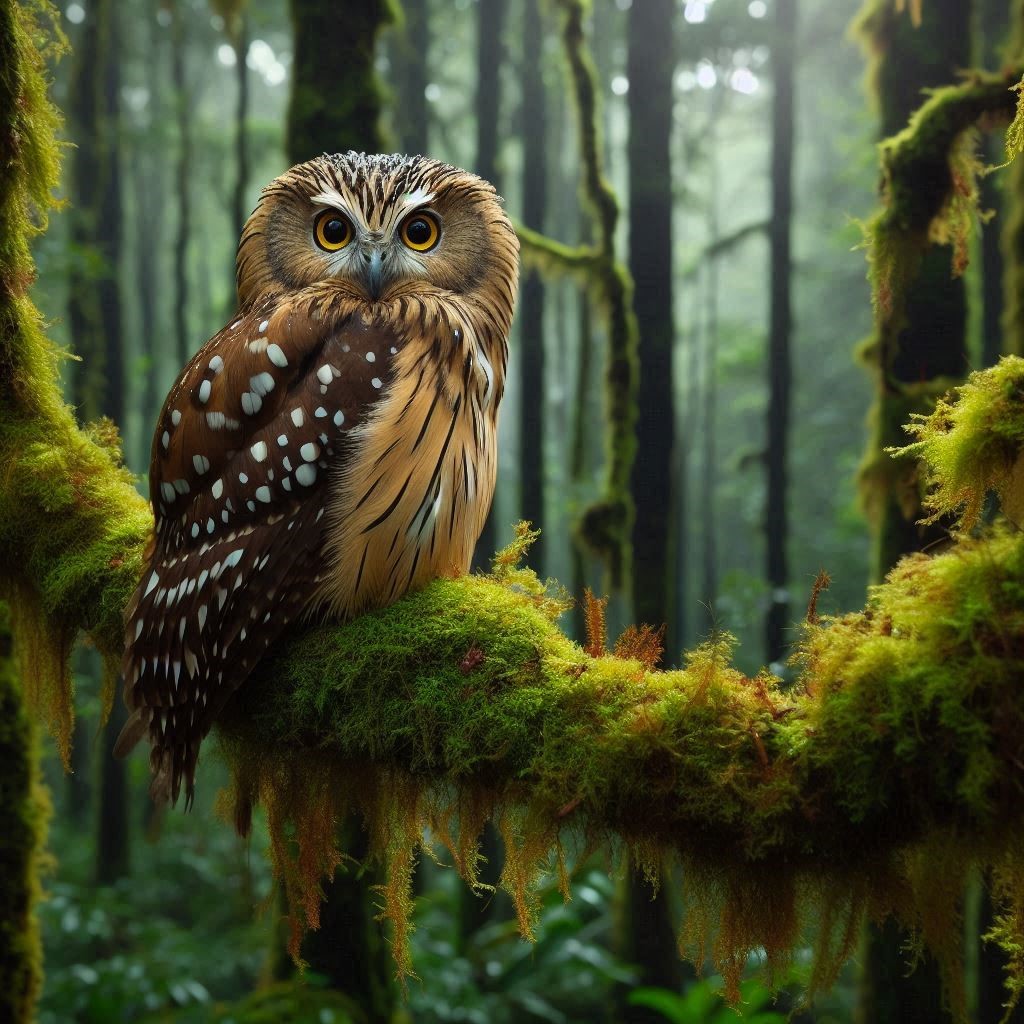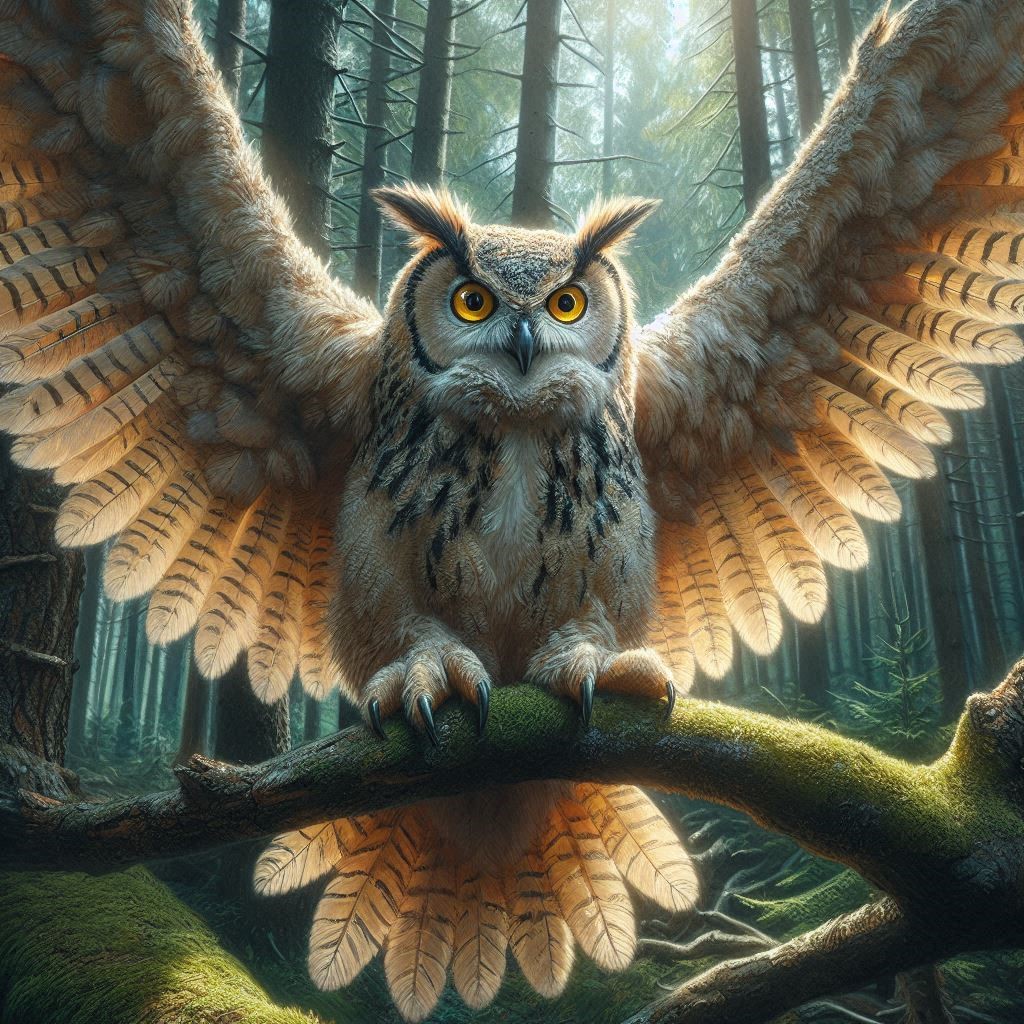Largest Owl Species. Have you ever gazed up at the night sky and wondered about the majestic creatures that glide silently through it? Among them, owls stand out as some of nature’s most fascinating birds. But did you know there are giants among these nocturnal wonders? Welcome to the world of the largest owl species, where size meets elegance in a captivating display of adaptation and survival. Let’s embark on a journey to uncover their unique traits, habitats, and roles in our ecosystems!
Owls of Impressive Size: Meet the World’s Largest Owl Species
When we think of owls, the image of a small, wise bird often comes to mind. However, some species are true giants that command attention and respect. The largest owl species in the world is the Blakiston’s fish owl, known for its impressive wingspan that can reach up to six feet!
These magnificent birds don’t just rely on their size; they also possess incredible hunting skills. With keen eyesight and silent flight, they navigate through forests and rivers as masterful predators under the moonlight.
Taxonomy
When diving into the taxonomy of owls, we find them belonging to the order Strigiformes. This encompasses all owl species across the globe. Within this fascinating group, there are two primary families: Strigidae (true owls) and Tytonidae (barn owls).
The classification helps us understand their evolutionary relationships and unique characteristics. Each family contains various genera and species that showcase a remarkable range of sizes, behaviors, and adaptations—making them some of nature’s most intriguing birds!
Description
The largest owl species can be truly awe-inspiring. With a wingspan that can exceed five feet, they dominate the night sky like no other bird. Their feathers are often mottled in shades of brown and gray, providing perfect camouflage against tree bark.
Their large heads feature striking facial discs that help funnel sound to their ears, giving them exceptional hearing. Those big yellow or orange eyes aren’t just for show—they provide excellent night vision, making these majestic creatures skilled nocturnal hunters.
Subspecies
The largest owl species, the Blakiston’s fish owl, boasts several intriguing subspecies. These variations occur mainly due to geographic differences and their habitats. Each subspecies has adapted uniquely to its environment, showcasing slight variations in size and plumage.
For instance, some populations are found in riverine forests of Eastern Russia, while others inhabit Japan’s wetlands. This diversity highlights how adaptable these magnificent creatures are as they navigate different ecosystems. It’s fascinating how each subspecies contributes to the overall tapestry of life in their regions.
Habitat
The largest owl species, like the Blakiston’s fish owl, thrive in specific habitats. They prefer riparian zones near rivers and dense forests where they can find ample food and nesting sites. These environments provide cover from predators while offering a hunting ground filled with fish and small mammals.
In contrast, other large owls may be found in open woodlands or mountain ranges. Their adaptability allows them to inhabit diverse landscapes, ensuring their survival across various regions of the globe. Each habitat plays a crucial role in their daily lives.
Feeding and behavior
Owls are fascinating hunters, primarily preying on small mammals and birds. They have excellent night vision that aids them in spotting prey from afar. With their silent flight, they can swoop down without a sound, making them stealthy predators.
Their hunting behavior varies by species. Some prefer to perch quietly and wait for movement below, while others actively patrol the ground. This adaptability makes them efficient at finding food no matter where they live or what’s available in their environment.
Status
The status of the largest owl species varies across different regions. Some, like the Blakiston’s fish owl, are classified as endangered due to habitat loss and pollution. Others may not face immediate threats but remain vulnerable in specific areas where their habitats are being disturbed.
Conservation efforts are crucial for these magnificent birds. Protecting their natural habitats ensures that they continue to thrive. It’s a reminder of how interconnected we all are with nature and our shared responsibility to preserve it for future generations.
Importance to indigenous peoples
Owls hold a significant place in the cultures of many indigenous peoples around the world. They are often seen as symbols of wisdom, mystery, and protection. Many tribes have stories and legends that feature owls, highlighting their role in guiding spirits or offering warnings.
In some communities, specific owl species are revered and respected for their hunting prowess. Their feathers may be used in traditional ceremonies or rituals, emphasizing the deep connection between these majestic birds and the spiritual beliefs of indigenous cultures.
Breeding
Breeding season for the largest owl species usually begins in late winter to early spring. During this time, males showcase their prowess through calls and displays to attract a mate. Once paired, they work together to find a suitable nesting site, often selecting tree cavities or cliffs.
After laying eggs, both parents share incubation duties. This collaboration ensures the hatchlings have the best chance of survival. The young owls rely on their parents for food and protection until they are ready to fledge and venture out into the world.
Threats
The largest owl species face numerous threats in their natural habitats. Habitat destruction is a significant concern, as forests are cleared for agriculture and urban development. This loss of space limits their hunting grounds and nesting sites.
Additionally, climate change poses risks by altering prey availability and affecting breeding patterns. Human activities like poaching also threaten these majestic birds. Awareness and conservation efforts are essential to protect the giants of the night from further decline.
Territorial Behavior
Owls are fiercely territorial creatures. They establish their home ranges and defend them vigorously from intruders. Males often hoot to announce their presence, serving as both a warning and an invitation for rivals to steer clear.
During the breeding season, this behavior intensifies. Owls will engage in aerial displays or even physical confrontations if necessary. Their keen eyesight helps them monitor their territory, ensuring they spot any potential threats before it’s too late. It’s fascinating how these silent hunters maintain order in their nocturnal domains.
Provincial Bird
In some regions, the largest owl species has taken on a special role as the provincial bird. This designation often highlights its significance in local culture and ecosystems. Residents take pride in this majestic creature, viewing it as a symbol of wisdom and strength.
Being recognized as a provincial bird also raises awareness about conservation efforts. It encourages communities to protect natural habitats where these remarkable owls thrive. Their presence serves not just as an emblem but also fosters appreciation for wildlife among locals and visitors alike.
Captivity
Captivity can be a double-edged sword for the largest owl species. On one hand, it provides care and protection from threats like habitat loss and poaching. Zoos and sanctuaries enable these magnificent birds to thrive in controlled environments where they receive proper nutrition and veterinary attention.
On the flip side, keeping owls in captivity poses challenges. They are natural predators with strong hunting instincts. Captive conditions sometimes limit their ability to express natural behaviors, which can affect their mental well-being over time. Balancing care with respect for their wild nature is crucial.
In Depth Look at the Largest Owl Species in the World
When we think about the largest owl species, the Blakiston’s fish owl often comes to mind. With its impressive wingspan of up to six feet, this majestic bird is not just a sight to behold but also a master of its domain.
These owls prefer riparian forests near rivers and streams in Eastern Asia. Their unique adaptations allow them to hunt primarily for fish, showcasing incredible skills that few can rival in the wild. These fascinating creatures embody both beauty and prowess in nature’s nighttime landscape.
The Largest Owl Species: Kings of the Nocturnal Sky
When we think of the largest owl species, the Blakiston’s fish owl often comes to mind. These magnificent birds command attention with their impressive wingspan and striking features. They glide silently through the night, making them true kings of the nocturnal sky.
Their size is not just for show; it helps them hunt effectively in their habitat. With keen eyesight and powerful talons, they thrive in ecosystems that provide ample food sources. Their presence signifies a healthy environment teeming with life.
Largest Owl Species: Giants of the Night
Owls are truly remarkable creatures, especially the largest owl species that glide silently through the night. These giants of the night sky possess majestic wingspans and keen hunting abilities. Their unique adaptations allow them to thrive in various habitats while remaining elusive.
What’s fascinating is their role as apex predators. With specialized feathers that muffle sound, they can swoop down on unsuspecting prey with ease. Observing these magnificent birds in action is a reminder of nature’s incredible design and power in maintaining balance within ecosystems.

Largest Owl Species: Nature Silent Predators
The largest owl species are truly nature’s silent predators, embodying an impressive blend of power and grace. These magnificent birds have evolved to thrive in various environments, showcasing their adaptability and hunting prowess. With their keen eyesight and exceptional hearing, they navigate the night with ease.
As we continue to learn more about these giants of the nocturnal sky, it’s essential to appreciate their role in maintaining ecological balance. Their presence is a testament to the health of our ecosystems. Whether you’re an avid birdwatcher or just someone who appreciates wildlife, witnessing these majestic owls in action is unforgettable.
So next time you hear the haunting call of an owl echoing through the night, remember that you’re listening to one of nature’s most remarkable hunters—a true giant among its kind.


